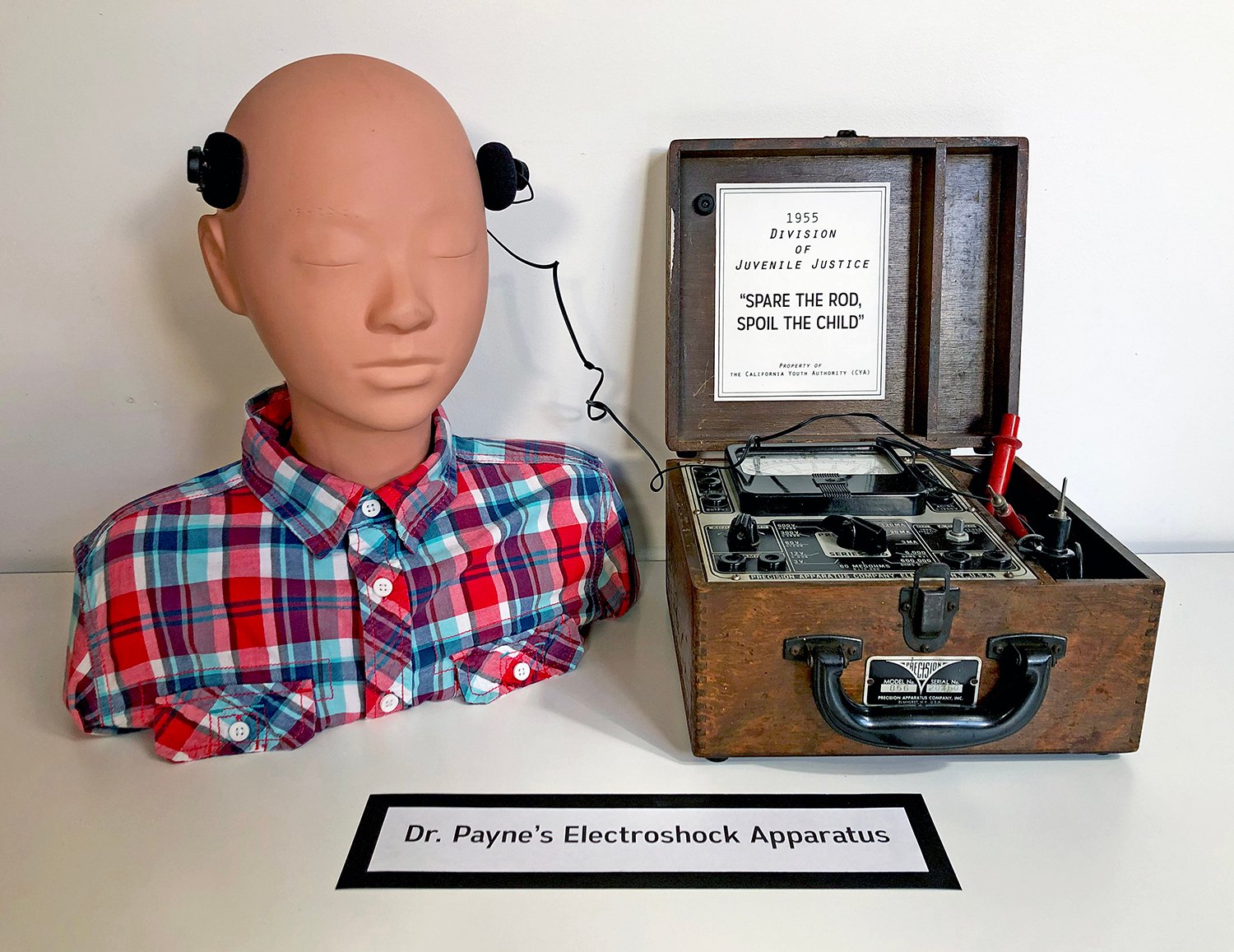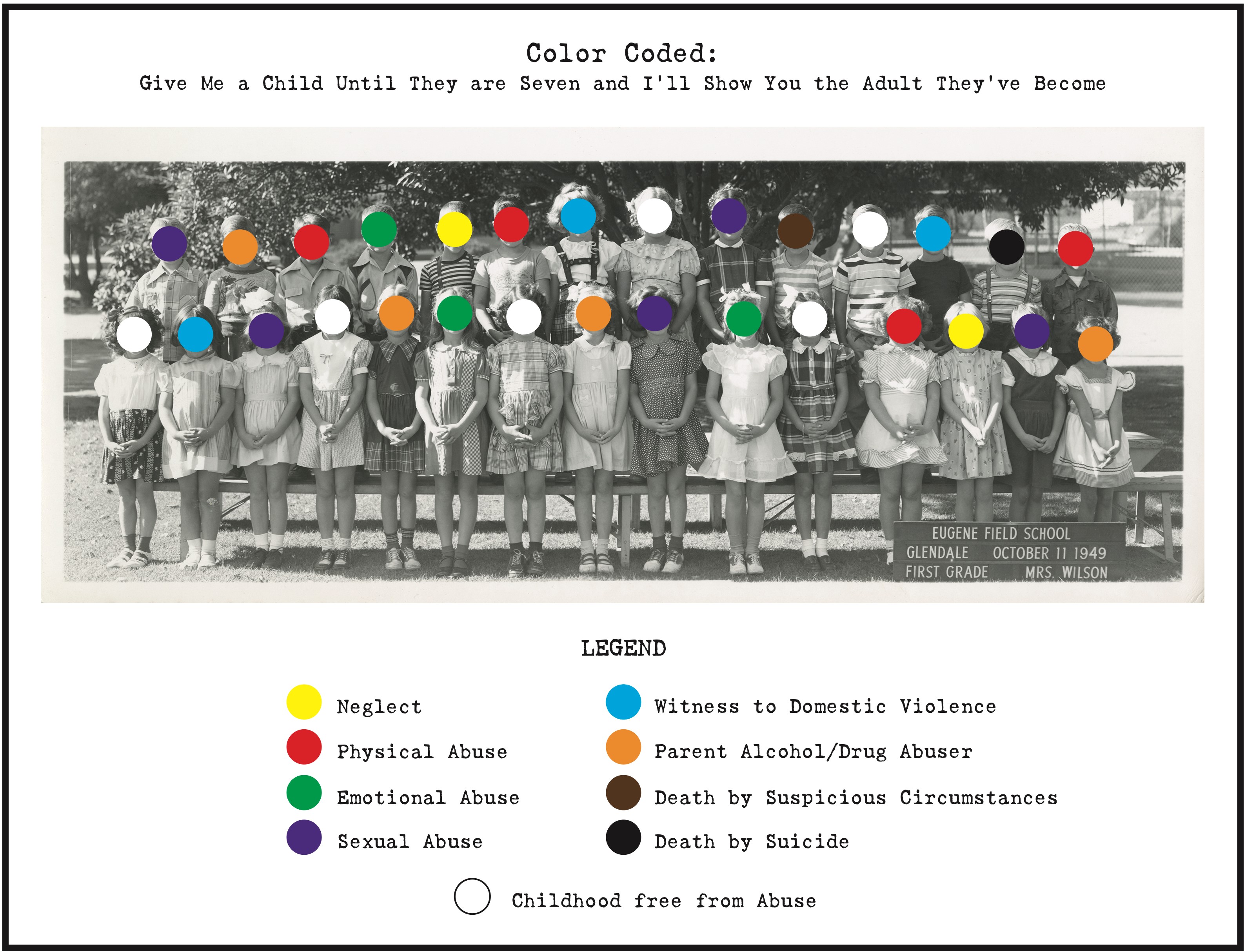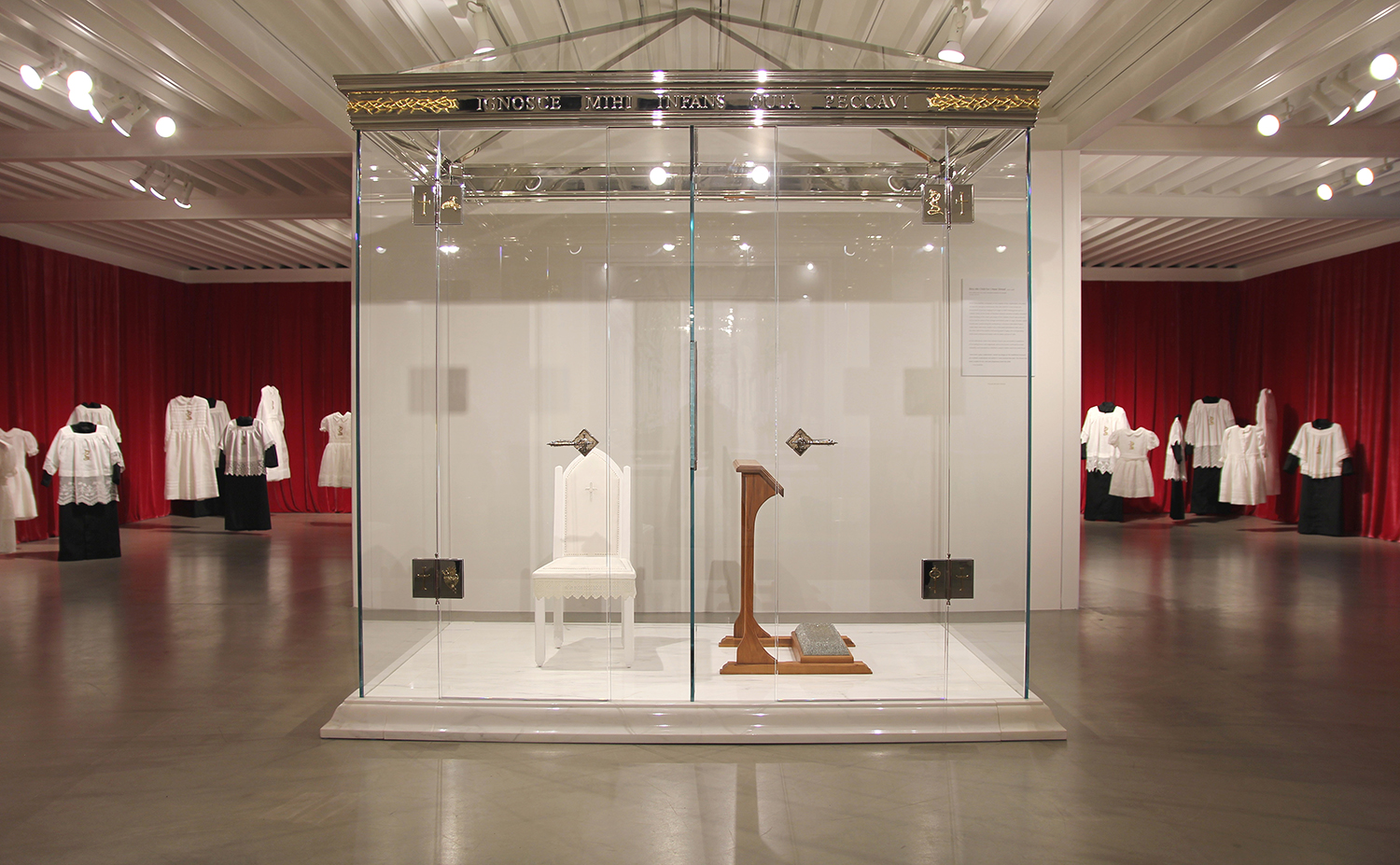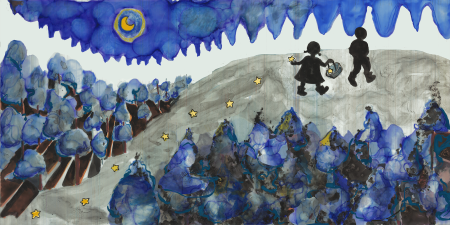Abstract
What would it mean for our imaginations to fathom, or even just approximate, subjective experiences of people who have endured chronic abuse as children? This article considers the usefulness of 3 works by artists who were directly or indirectly affected by this type of trauma.
Fathoming Subjective Experiences of Child Abuse
Agamemnon is a Greek tragedy known for one especially notorious act. The father, Agamemnon, kills his daughter. How were viewers supposed to understand this convoluted play? They weren’t. Incomprehensibility, according to the philosopher G.W.F. Hegel, was intrinsic to Greek tragedy.1 Viewers of this play could nonetheless grasp at least some measure of the fallout from atrocity, Hegel declared, by comprehending characters’ underlying internal struggles. What, for instance, were the repercussions for Agamemnon after learning he killed his daughter? Articulating and representing those struggles, Hegel believed, are jobs for philosophy and for art.2
Some playwrights, such as Shakespeare, seem to have the ability to depict such internal processes, but a question remains whether and to what extent artists do so faithfully. The philosopher Thomas Nagel further wondered whether any subjective experiences could have sufficient objective character to be responsibly represented by another.3,4 If subjective experience doesn’t have an objective foundation, Nagel reasoned, we’re then left to our imaginations—which raises yet another question. Can our imaginations ever bring us close enough to represent encounters outside the range of “normal” human experiences? We can, of course, supplement our imaginations with data, if indeed they exist; and perhaps personal narratives and archival resources might be useful as well. But if, like the Greek tragedy noted above, the event is highly unusual, we are ultimately left trying to comprehend an unfathomable human experience.
Which now brings us to the topic of child abuse—namely, children who have been sexually, physically, or emotionally abused or neglected. Usually, abuse is committed by a parent, stepparent, relative, or family friend; sexual abuse is often committed by an adult authority figure.5 Teachers, coaches, priests, lawyers, scoutmasters, doctors, police officers, foster parents, clergymen, babysitters, and preschool owners—to mention just a few categories of perpetrators, both male and female—are all drawn from the 4-decades-long forensic caseload of the first author.5 We also know that child abuse occurs regularly and that it is a crisis of epidemic proportions.6,7,8
How then, can we, as health care professionals, better understand this inscrutable tribulation, given that it also appears at the border of intelligibility? The answer for us has always been through scrutinizing artistic visions that were manifested in the wake of this unrelenting trauma, particularly as conceived by artists who are survivors but also, to some extent, by artists who intimately connect to this kind of emotional upheaval.9,10,11
Three Artworks
With this background in mind, we introduce 3 artworks. Two are by the second author (T.L.A.), who is a survivor of chronic childhood sexual abuse, and one was done in collaboration with the first author (P.R.A.).12,13 The third artwork is by an artist who was not a survivor of child abuse but who nevertheless has a relevant connection to this tragedy. Trina McKillen is an Irish artist who was raised in a devout Catholic family in Belfast and, upon hearing the many stories of sexually abusing Catholic priests, she conceived her assemblage. Taken together, these 3 artworks represent cardinal features of the child abuse crisis—namely, it’s historical anchoring (Dr Payne’s Electroshock Apparatus), it’s ubiquity (Color Coded), and its institutional preservation (Bless Me Child for I Have Sinned).
Figure 1. Dr Payne’s Electroshock Apparatus, 2022, by Tania Love Abramson and Paul R. Abramson

Media
Child’s mannequin head, facsimile electroshock therapy device, text panel, 16" x 24" x 16".
Dr Payne’s Electroshock Apparatus is a case in point of exhibiting the unconscionable harm done to victims of child physical abuse. This effect is achieved largely through the historically driven signage, referring as it does to the purported 1955 Division of Juvenile Justice’s “Spare the Rod, Spoil the Child” slogan.14 This signage, which is meant to signify the justification of physical abuse as a credible form of parental instruction, also draws power from being harnessed to a facsimile 1950s electroshock unit.
What makes this artwork especially unsettling is that it serves as a reminder that the harm done to children of a previous era continues to this day. Even in the 21st century, hitting children with objects and beating them, as well as shaking infants, persists throughout the world.15 The overriding message of this activist artwork is that our public health efforts are by no means complete. Parents continue to believe that they are the masters of their own domain and thereby can administer physical punishment at their sole discretion.16 The adage that “There’s no place like home” apparently also means that there’s no place like home for harming your child. It also doesn’t help matters that corporal punishment has been codified in the New King James version of the Bible—Proverbs 13:24, to be exact: “He who spares his rod hates his son. But he who loves him disciplines him promptly.”
Figure 2. Color Coded, 2022, by Tania Love Abramson

Media
Digitally manipulated found photograph; dimensions vary.
The second artwork, titled Color Coded, is able to achieve its power instantaneously. Using a found vintage elementary school photograph, Color Coded is an allegorical representation of the ubiquity and gravity of child abuse, without ever relying on representative samples, national statistics, or even descriptive language, such as legal definitions. The viewer, nonetheless, readily gets the point. Child abuse does monumental damage to countless victims.
The artwork is introduced by a gender-neutral version of a quote often attributed to Aristotle: “Give me a child until he is seven and I will show you the man,” which attests that early childhood experiences are formative. With this adage in mind, the colored dots covering the faces of the children serve 2 purposes. They eliminate the identification of each classmate, while simultaneously introducing the various traumas of child abuse—physical, emotional, sexual, and neglect—as well as 4 additional adverse events: witnessing domestic violence, parental alcohol/drug abuse, suspicious death, and death by suicide. It is clearly not a pretty picture by any means. On the other hand, it’s also a sincere rendering of the emotional adversities experienced by children of this or any other era throughout the world. Finally, if indeed there is an additional operative element in this artwork, it’s the choreographed positioning of the little girls’ hands in the first row. They are the charming counterpoint to the torment represented herein, further suggesting that, despite the idylls of childhood, innocence doesn’t come with a guarantee.
Figure 3. Bless Me Child for I Have Sinned, 2010-2013, by Trina McKillen

Used with permission of the artist.
Media
Glass, marble, wood, nails, metal, nickel-plated composite, linen, plexiglass, 102" x 94" x 58".
Lastly, representative of the institutional preservation of child abuse, is Trina McKillen artwork, Bless Me Child for I Have Sinned, which is part of a larger installation titled Confess. It is a magnificently crafted and meticulously designed sculptural edifice that operates on several dynamic levels. Although neither priest nor child is visible, the viewer nonetheless immediately grasps that it is the priest who has been exposed as the confessor of the crime of child sexual abuse, and it is he (presumably on his knees) who is asking forgiveness from a child (sitting in the white chair) who has been a victim of his crime.
This confessional box also functions as a symbol of a fervent departure from Catholic Church policy, whereby the crime of child sexual abuse is no longer banished from sight but instead is now transparent, literally, for all to see. And, as such, this artwork becomes a powerful metaphor of public reckoning, whose therapeutic value cannot be emphasized enough. It gives voice to a particular category of victims of child sexual abuse using an iconic Catholic symbol, the confessional.
A Take-Home Message
What these 3 artworks have in common is a commitment to using narrative devices—metaphor and allegory—to represent different aspects of the unrelenting trauma of child abuse.17 There are several advantages to this strategy. First and foremost, each of these artworks effectively illuminates, on both conscious and unconscious levels, the vestiges of anguish experienced by victims of child abuse. By depicting this haunting nightmare, these artworks also serve as effective pedagogic mediums and as persuasive vessels for disseminating the subjective experience of severely traumatized children. That is, they teach—while at the same time spreading the word about—child abuse in a format that is seamlessly absorbed. They’re also replete with “aha!” moments, without ever unduly offending the viewer. Lastly, by relying on metaphor and allegory rather than on perception alone, these artworks tell compelling stories about child abuse that make a greater cognitive demand on the viewer. In that case, what the viewer gets is more than what the viewer sees.
References
-
Hegel GWF. Phenomenology of Spirit. Miller AV, trans. Oxford University Press; 1977.
-
Pippin R. Philosophy by Other Means: The Arts in Philosophy and Philosophy in the Arts. University of Chicago Press; 2021.
-
Nagel T. What is it like to be a bat? Philos Rev. 1974;83(4):435-450.
-
Nagel T. The View From Nowhere. Oxford University Press; 1986.
- Abramson PR, Bland-Abramson S. Hiding under the color of authority: Eric Wess Uller and his decades-long rampage of child sexual abuse. J Child Sex Abuse. 2022;31(3):353-372.
- Johnson CF. Child sexual abuse. Lancet. 2004;364(9432):462-470.
-
Jenny C, Crawford-Jakubiak JE; Committee on Child Abuse and Neglect, American Academy of Pediatrics. The evaluation of children in the primary care setting when sexual abuse is suspected. Pediatrics. 2013;132(2):e558-e567.
-
Kellogg N; Committee on Child Abuse and Neglect, American Academy of Pediatrics. The evaluation of sexual abuse in children. Pediatrics. 2005;116(2):506-512.
-
Abramson TL, Abramson PR. Charting new territory: the aesthetic value of artistic visions that emanate in the aftermath of severe trauma. Contemp Aesthetics. 2019;17:1-2.
-
Abramson PR, Abramson TL. Should art about child abuse be exhibited in corridors of health professional schools? AMA J Ethics. 2020;22(6):E525-E534.
- Abramson PR, Abramson TL. Visual and narrative comprehension of trauma. AMA J Ethics. 2020;22(6):E535-E543.
-
Abramson TL. Shame and the Eternal Abyss. Asylum 4 Renegades Press; 2017.
- Abramson TL. Unchain my anguish: a feminist take on art and trauma. Fem Rev. 2019;122(1):189-197.
- Barnosky J. The violent years: responses to juvenile crime in the 1950s. Polity. 2006;38(3):314-344.
- Runyan DK, Shankar V, Hassan F, et al. International variations in harsh child discipline. Pediatrics. 2010;126(3):e701-e711.
-
Grogan-Kaylor A, Ma J, Graham-Bermann SA. The case against physical punishment. Curr Opin Psychol. 2018;19:22-27.
-
Holyoak KJ. The Spider’s Thread: Metaphor in Mind, Brain, and Poetry. MIT Press; 2019.



